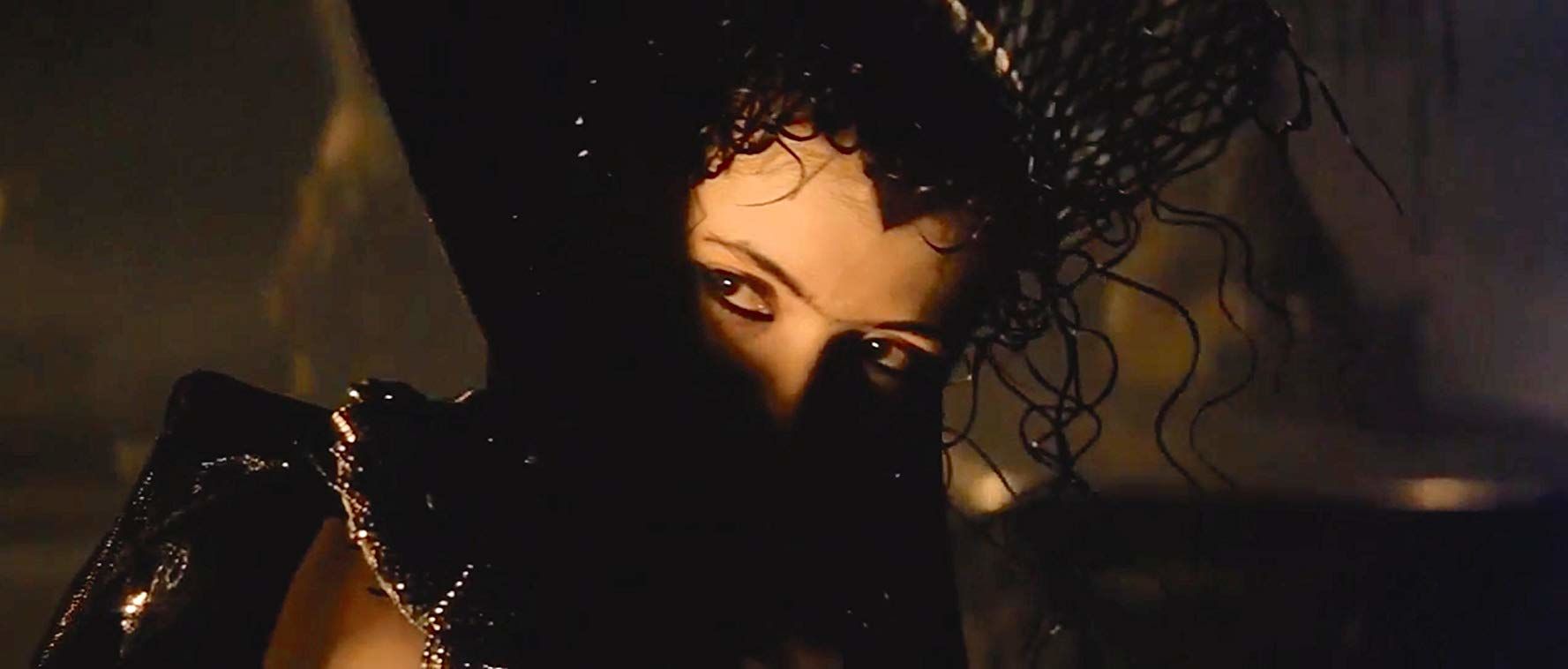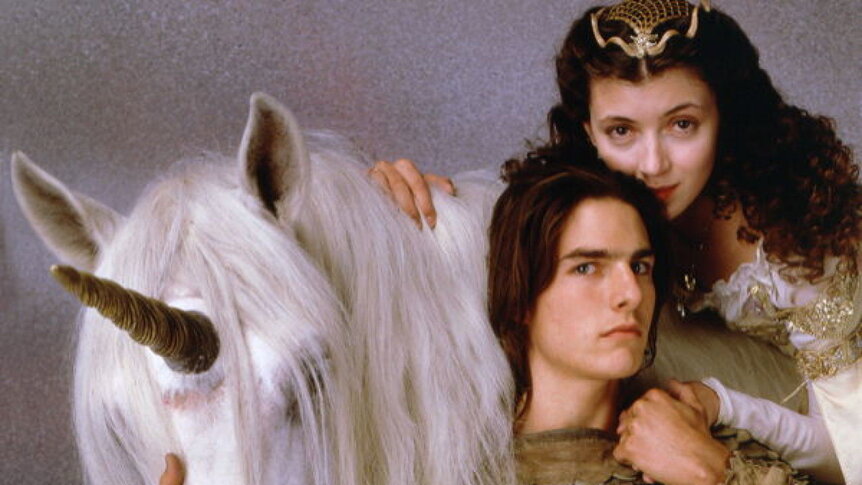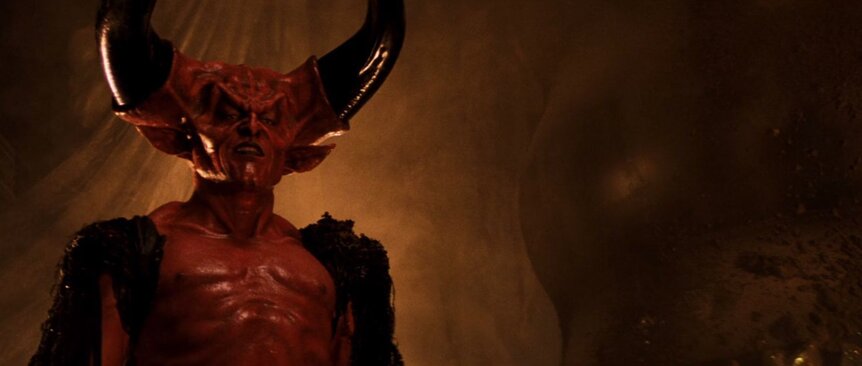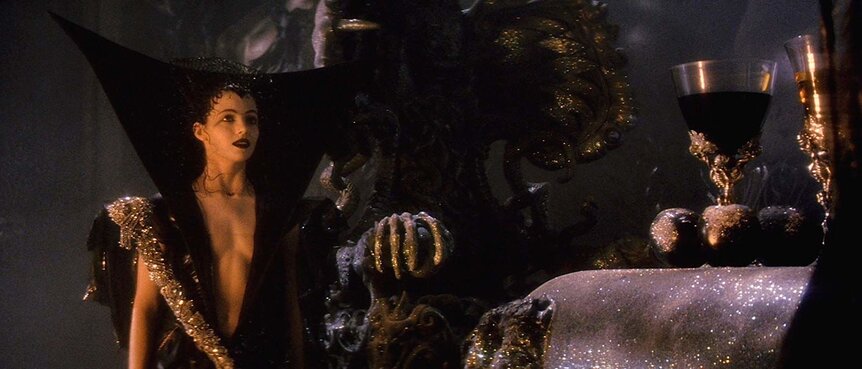Create a free profile to get unlimited access to exclusive videos, sweepstakes, and more!
Legend and my sexual awakening

When was your sexual awakening?
That’s a question that I’ve seen come up online a lot, whether it's through Tumblr memes, tweet threads, or think pieces like the one I’m writing right now. Many people credit Disney princes for first stirring their loins, even when they’re of the anthropomorphic variety, or swoon-worthy young actors who appeared in classic teen TV shows. Don’t get me wrong, these characters did it for me, especially Rider Strong in Boy Meets World, but Shawn Hunter doesn’t get the credit for awakening my sexuality for the first time. Nope, that honor goes to Ridley Scott and his 1985 dark fantasy adventure Legend.
I had the movie on VHS and probably watched it once or twice a year from the age of 5 to 13, and during my early teens, it totally sparked an early curiosity about my body and physical attraction. Rewatching the movie nowadays, it’s very clear to see why. Legend has everything: fairies, unicorns, a young Tom Cruise, goblins, glitter, a forest elf, a Lord of Darkness, bubbles, even an impromptu dance number. Scott enlisted the help of author and screenwriter William Hjortsberg to pen his Legend of Darkness (that was the working title at the time) in the five weeks before he began shooting Blade Runner in 1981.
The director wanted to create an original mythological story that had all the charms of a Brothers Grimm fairy tale but with a cinematic purpose. And we all know there is a rather sexual element to a lot of the classic fairy tales; Angela Carter proved that with her 1979 short fiction collection The Bloody Chamber, which extracted the themes of sexuality and violence from those stories.Beauty and the Beast and Snow White were sources of inspiration for Carter, as was Bluebeard for the titular story that centered on a virginal heroine being corrupted by a debaucherous Marquis. That theme, of losing one’s sexual innocence, is more than obvious in Legend through the characterization of Princess Lili (Mia Sara) and Darkness (Tim Curry).
Lili, our virginal heroine dressed in white, is constantly doing things she shouldn’t, whether it’s running off with the forest boy Jack (Cruise) or attempting to touch one of the sacred unicorns. It’s because she gives in to temptation and distracts the stallion that the goblins are able to injure the creature and saw off the source of his magical power: his horn. If that isn’t some major phallic imagery for you I don’t know what is, but it’s at the moment of the unicorn’s castration, as it were, that Lili’s womanhood is also put on pause.
As the world descends into a wintery tundra, she throws her crescent moon ring into a pond, declaring that she will marry the person who retrieves it. Anyone who has ever owned a Mooncup knows the celestial connection between women’s menstrual cycles and big space rock so the metaphor is pretty clear, though as a child I was none the wiser. These elements of sexual imagery went straight over my young head, and it wasn’t until the film journeyed further to Darkness’ domain that it started to awaken my senses.Darkness, our Marquis, is the epitome of brutish masculinity who in a weird way I found more alluring than Jack. Maybe it’s because he’s a bad boy, and who could be badder than a red-blooded devil lookalike with washboard abs and a sexy baritone voice?
And ever the fairy tale villain, Darkness tries to lure the virginal maid into his dark world through the use of sly tricks. After she and the female unicorn are captured, he bamboozles Lili by creating an illusion in which she is dancing with a masked woman, in a glittering black dress.
As the waltz gets more passionate, more feverishly seductive, Lili’s defenses begin to slip, and soon she becomes the woman in black. Forget She’s All That and Never Been Kissed, Lili’s goth makeover is one of the most iconic on celluloid, and I just wanted to be as sensuous and captivating as she was.Black Lili is the picture of sexual liberation, which is rather confusing considering the film implies that her association with Darkness is bad and something she should fight against. I was torn at the time, just as I was torn about my odd attraction to the Satanic-esque villain rather than Cruise’s handsome hero.
I think that’s because, like many fairy tales, keeping a girl’s innocence intact is something to be championed, that virginity should be protected at all cost, and even while watching the movie 20 years ago I could understand how ridiculous a standard that was for women to maintain.
Both consciously and subconsciously, I was probably absorbing a lot of knowledge about gender roles, feminism, and sex, and maybe my preteen self welcomed the idea of sexual liberation and empowerment that Black Lili stood for, but really it was the dark and light side that presented a more realistic heroine for the time.Instead of allowing herself to totally succumb to her baser instincts, she tricked Darkness into thinking she would kill the last unicorn when in truth she let the mare escape. By setting that magical female creature free she was also freeing herself, and proving that the best version of herself was one that was both dark and light, innocent but also full of desire.
I can safely say I wasn’t thinking too deeply about the catalyst in Legend for my sexual awakening, but it’s certainly been a cathartic experience revisiting the movie and understanding the cues and themes that might have sparked it. It’s also proven to be a shining example of how a movie can be just as sexy without sex.
Though a sh*tload of glitter does help.


















